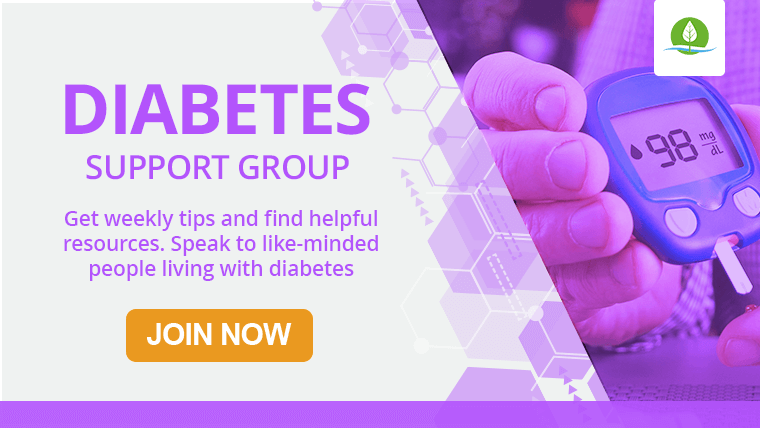When you have diabetes, managing blood sugar levels can feel like a balancing act.
You want to avoid high blood sugar, but you also don’t want it to drop too low.
Having either high or low blood sugar comes with its dangers, so the ultimate goal of diabetes management is to keep blood sugars in a healthy range.
While individual blood sugar goals will vary, it’s generally accepted to aim for a blood sugar range of 70-140 mg/dL.
Low blood sugar usually results in distinct symptoms. Being able to recognize these symptoms is an integral part of treating and preventing hypoglycemia.
People taking diabetes medications (especially people with type 1 diabetes taking insulin) are especially at risk for low blood sugar.
Understanding the reasons for hypoglycemia is also vital for helping to prevent them.
What is hypoglycemia?
Hypoglycemia is the term for low blood glucose (blood sugar) levels. It occurs when blood sugar drops below 70 milligrams per deciliter (mg/dL).
Hypoglycemia can be mild, moderate, or severe. Severe hypoglycemia can become life-threatening if it isn’t treated quickly, so it’s important to promptly treat a blood sugar drop.
There are different levels of hypoglycemia, which correlate with the severity of the low blood sugar. Below is what is considered low blood sugar:
- Level 1 (mild) hypoglycemia: Blood glucose is less than 70 mg/dL but is 54 mg/dL or higher.
- Level 2 (moderate) hypoglycemia: Blood glucose is less than 54 mg/dL.
- And level 3 (severe) hypoglycemia: A person cannot function because of mental or physical changes, and they need help from another person. In this case, blood glucose is often below 40 mg/dL.
Get Your FREE Diabetes Diet Plan
- 15 foods to naturally lower blood sugar levels
- 3 day sample meal plan
- Designed exclusively by our nutritionist
Hypoglycemia Causes
Insulin is a hormone that allows glucose to enter the cells where it is used for energy. The pancreas releases insulin in response to high blood sugar levels. When glucose enters the cell, it leaves the bloodstream, causing a blood sugar drop.
There are several potential causes of low blood sugar levels, and in some instances blood sugar may drop suddenly, which we’ll discuss below.
Too much insulin or diabetes medications
Many people take diabetes medications to manage their blood sugar levels. Out of all the available diabetes medicines, injectable insulin carries the greatest risk of low blood sugar, especially rapid-acting insulin.
Because insulin lowers blood sugar, taking too much insulin or other diabetes medications can cause hypoglycemia.
Not eating enough carbohydrates
Carbohydrates are a type of nutrient found in foods like grains, starchy vegetables, fruit, and some dairy products. Carbohydrates turn into blood sugar when digested, so they significantly impact blood glucose levels than proteins and fats.
Not eating enough carbohydrates, especially while also taking blood sugar-lowering medications, can cause hypoglycemia.
Physical activity
Physical activity stimulates the body to take up more glucose for energy which can cause low blood sugar, especially if carbohydrates aren’t taken in regular amounts while exercising for long periods.
The liver also stores sugar in the form of glycogen. Glycogen stores provide sugar during fasting, stress, and exercise, which lowers the risk of hypoglycemia. During prolonged periods of exercise or fasting, glycogen stores can become depleted.
Weight Loss
Weight loss can also use up glycogen stores, especially if the person is on a low-carbohydrate diet. Without adequate glycogen stores, the body can’t correct low blood sugar on its own. People with eating disorders may also develop low blood sugar due to being in a fasting state for long periods.
Kidney disease
When the kidneys don’t filter blood as quickly as they should (such as chronic kidney disease), insulin and other diabetes medications can stay in the bloodstream longer than they should, causing low blood sugar.
Reactive hypoglycemia
People with and without diabetes can produce too much insulin in response to eating, especially simple sugars like candy and juice. This is called reactive hypoglycemia, and it usually occurs within minutes to hours after eating.

Possible causes, with diabetes
If you have diabetes, you might not make enough insulin. As a result, glucose tends to build up in the bloodstream and can eventually become dangerously high. To treat high blood sugar, you may be prescribed insulin or other medication to lower blood sugar levels.
However, too much insulin or other diabetes medications may cause your blood sugar level to drop too low, resulting in hypoglycemia. Hypoglycemia can also occur if you eat less than usual after taking diabetes medication, or if you exercise more than you normally do.
Possible causes, without diabetes
Hypoglycemia in people without diabetes is much less common. But it can occur and some if the causes can include:
Medication: Taking someone else’s oral diabetes medication accidentally is a possible cause of hypoglycemia.
Excessive alcohol drinking: Drinking heavily without having eating can block your liver from releasing glucose into your bloodstream, causing hypoglycemia.
Some critical illnesses: Severe liver illnesses such as severe hepatitis or cirrhosis can cause hypoglycemia.
Long-term starvation, as can occur in the eating disorder anorexia nervosa, can result in too little of substances your body needs to create glucose.
Insulin overproduction: A rare tumor of the pancreas, known as insulinoma, can cause you to produce too much insulin, resulting in hypoglycemia.
Hormone deficiencies: Certain adrenal gland and pituitary tumor disorders can result in a deficiency of key hormones that regulate glucose production.
Understanding your blood sugar
The best way to understand how your blood sugar changes day-to-day is to regularly use a blood glucose meter to check your blood sugar level. If you’re newly diagnosed, it’s also helpful to keep a food journal in addition to a blood sugar log, as well as tracking any physical activity.
Your blood sugar patterns are unique to you. Over time you’ll have a better understanding of which foods raise your blood sugars the most, as well as how your blood sugar responds to different types of exercise.
Some people with diabetes (especially those with type 1 diabetes) choose to use a continuous glucose monitor (CGM) to monitor their blood sugar trends.
A continuous glucose monitor is a device with a sensor worn under the skin which measures blood sugar levels every 5-15 minutes. This is useful for identifying trends in blood sugar levels and can help predict and identify hypoglycemia sooner.
Using a CGM can reduce the amount of finger prick glucose tests needed each day, which is an added benefit.

What symptoms to watch for
Hypoglycemia can be a challenging diabetes compications, as you ask yourself, why does my sugar keep dropping? There are several common low blood sugar symptoms to look out for. These symptoms arise due to the adrenal glands (located on top of the kidneys) releasing both epinephrine and cortisol in response to hypoglycemia.
However, not everyone will experience all of thesehypoglycemia symptoms , and low blood sugar reactions can change. If you suspect you have low blood sugar, the best thing to do is check your blood sugar to confirm.
People who have had diabetes for a long time or who have experienced hypoglycemia frequently may develop hypoglycemia unawareness.
Hypoglycemia unawareness is a diabetes complication where people don’t experience the usual warning signs of low blood sugar before it occurs. Up to 40% of people with type 1 diabetes experience hypoglycemia unawareness.
The most common symptoms of hypoglycemia
- An irregular or fast heartbeat
- Fatigue
- Pale skin
- Feeling shaky and/or dizzy
- Sweating
- Hunger
- Irritability and moodines
- Feeling anxious or nervous
- Headache
- Tingling or numbness of the lips, tongue or cheek
As hypoglycemia worsens, signs and symptoms can include: Confusion, abnormal behavior or both, such as the inability to complete routine tasks, Visual disturbances, such as blurred vision, Seizures, Loss of consciousness
Some people experience other signs of hypoglycemia, such as nocturnal hypoglycemia, which is when low blood sugar occurs overnight while sleeping. Nocturnal hypoglycemia is potentially even more dangerous because the person isn’t awake and may not notice the symptoms of a blood sugar drop.
Signs of nocturnal hypoglycemia
- Damp sheets or nightclothes from sweating from low blood sugar
- Nightmares
- Feeling tired, irritable, or confused after waking up
Signs and symptoms of severe hypoglycemia
If hypoglycemia goes untreated, it can become a low blood sugar emergency.
- Clumsiness or jerky movements
- Muscle weakness
- Slurred speech or difficulty speaking
- Blurry or double vision
- Drowsiness
- Confusion
- Convulsions or seizures
- Unconsciousness/fainting
- Coma
- Death
Hypoglycemia Treatment
If blood sugar is below 70 mg/dL, it should be treated by consuming food or drink containing 15 grams of carbohydrates.
Fruit juice and candies are preferred as they are rapidly absorbed into the bloodstream. It doesn’t take much juice to get to 15 grams of carbohydrates; about one-half cup will suffice.
Glucose tablets or glucose gels are a popular treatment for low blood sugar because they’re easy to have on hand in all different types of situations.
They dissolve quickly and provide pure glucose, so the blood sugar rapidly absorbs them to raise blood sugar. They are available over the counter without a prescription, so this is a convenient option for most people.
For cases of severe hypoglycemia, you can use a glucagon injection. Like insulin, glucagon is a hormone the pancreas produces. However, glucagon has the opposite effect as insulin as it stimulates the breakdown of liver glycogen stores into glucose, which raises blood sugar.
Medical professionals must prescribe glucagon injections. They’re especially helpful to use when hypoglycemia is severe, or the person is too unresponsive to take in food or drink to treat the low blood sugar.
After taking some carbohydrates or using a glucagon injection, blood sugar should be rechecked in 15 minutes. If blood sugar levels still aren’t at the target, the treatment should be repeated and blood sugar retested in another 15 minutes. You should repeat that process until the blood sugar levels are at the target. If it’s not working, you should notify a healthcare provider.
* An unresponsive person should always receive emergency medical treatment.*
Ways to avoid lows
Eat consistently
Eating a variety of foods every few hours, including protein, fat, and carbohydrates, can help keep blood sugar levels stable. Some people find that eating protein with carbohydrates can help keep blood sugar levels steady longer than just eating carbohydrates alone.
Take diabetes medications as prescribed
Insulin and some other diabetes medicines can be dangerous because of how quickly and effectively they can lower blood sugar. Insulin should only be used under the guidance of a healthcare provider and used as prescribed.
Use snacks to your advantage
For someone prone to hypoglycemia, snacks can be a handy tool in preventing low blood sugar. Having a snack before exercising or taking a bedtime dose of insulin can help offset the blood-sugar-lowering effect.
Hypoglycemia after meals
Hypoglycemia usually occurs when you haven’t eaten, but not always. Sometimes hypoglycemia symptoms occur after certain meals high in sugar because your body produces more insulin than you need.
This type of hypoglycemia, called reactive hypoglycemia, can occur in people who have had stomach bypass surgery.
Conclusion
Hypoglycemia is the term for low blood sugar, which occurs when blood glucose is below 70 mg/dL.
Blood sugar levels can fall too low for many reasons, including not eating enough carbohydrates, taking too much diabetes medication, exercise and having kidney disease.
Understanding the causes and symptoms of hypoglycemia can help prevent it and encourage more stable blood sugar levels.
Hypoglycemia can be treated using fruit juice, candies, or glucagon injections.
Effective strategies to prevent low blood sugar include taking diabetes medications as prescribed, monitoring blood sugar levels to understand your blood sugar trends, and eating a consistent, balanced diet.
Explore More







